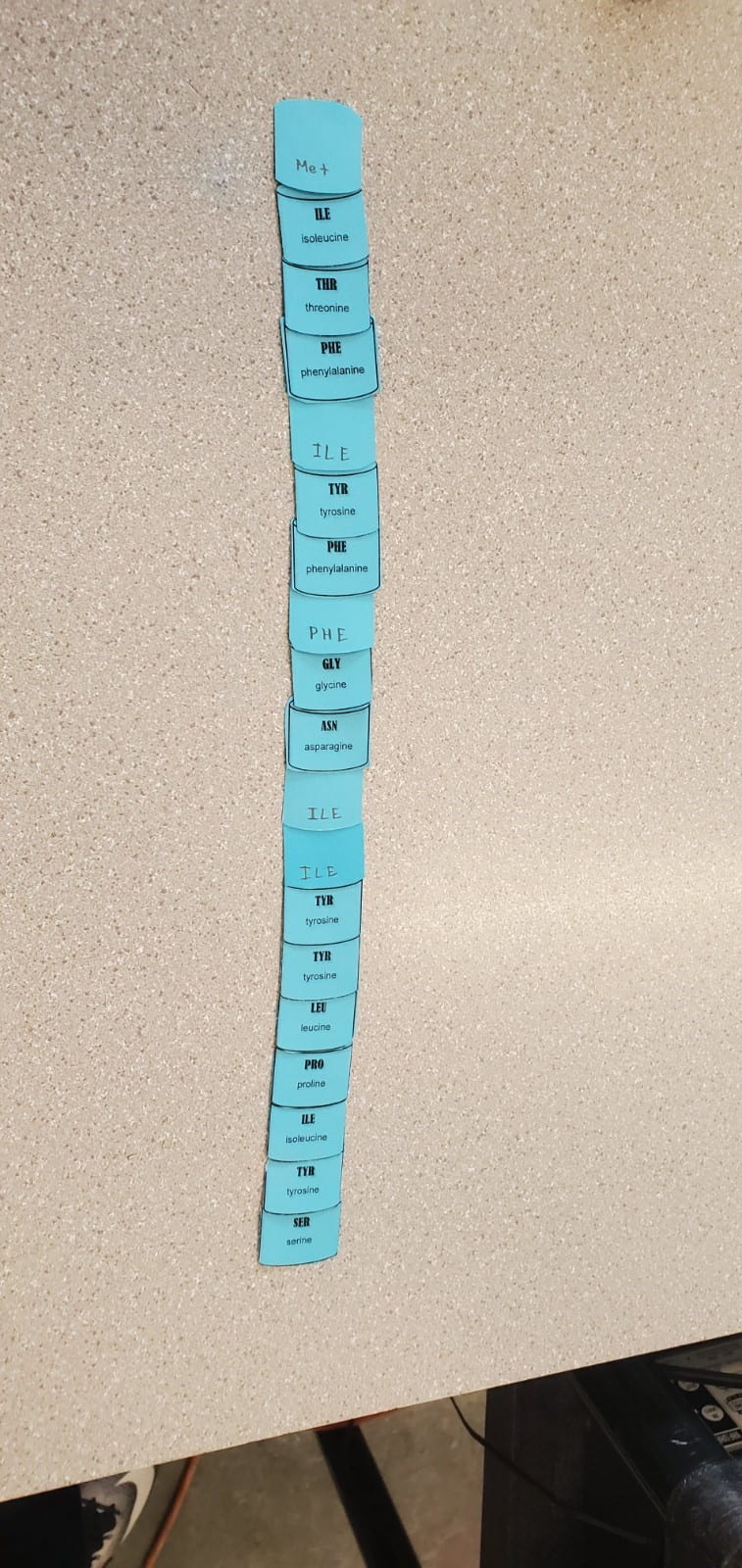Transcription

mRNA is different from DNA in multiple ways. From its structure to its functions, there are numerous differences.
For structural differences, mRNA is single-stranded and short. Where DNA has the classic double helix (Two sugar-phosphate backbones) and has a hefty 85 million nucleotides, mRNA only has one strand (One sugar-phosphate backbone) of about 1000 nucleotides. Finally, mRNA contains a different nucleotide base; where DNA has the base Thymine, RNA has the base Uracil.
For functional differences, DNA has the “blueprint” to create proteins, but mRNA is the method in which DNA’s message gets to the ribosomes. DNA is too large to exit the nucleus, so the smaller mRNA allows the protein synthesis to happen.

During transcription, there are three main steps, and these steps are mostly similar to the ones of DNA Replication. The first step is unwinding/unzipping. Here, the helix unwinds into the ladder form and then unzips.


The next step of RNA transcription is complimentary base pairing. A sugar-phosphate backbone containing the sugar Ribose and not the sugar Deoxyribose comes in to create the complimentary strand of one DNA backbone strand (shown as blue pipe-cleaner). It will have the same complimentary bases with one exception: instead of the base Thymine, mRNA will have the base Uracil. The mRNA (shown as the red pipe-cleaner) will create a complimentary strand of the leading strand only because this strand contains the essential information on how to build proteins. The enzyme RNA Polymerase will facilitate this process, creating H-bonds between the nucleotides and bonding the backbone and the nucleotides. While this is happening, the lagging strand of DNA in not involved. This is modelled in the image below.

The final step is called separation. This happens when the RNA Polymerase is finished transcribing DNA’s message onto the mRNA, and the mRNA will simply float away. The DNA leading and lagging strands will rejoin and reform the double helix, whereas the mRNA will be checked for any errors in the base sequence. There, it will be modified so that all the bases are correct, and unnecessary bases will be taken away. mRNA can now exit the nucleus towards the ribosomes and DNA is in its original double helix with nothing changed to it.

Our activity was able to clearly demonstrate how the process of Transcription works. The diagrams nicely show how each step looks, and gives us a nice visual representation. There were, however, a couple of ways the model could have been different so that the process is better depicted. One way was that the strand of DNA was equal in length to the strand of mRNA, so it was difficult to show the process of the double helix unzipping at regions where the transcription occurs. Consequentially, we had to depict the process of unzipping as a full “unzip” and not just a partial “unzip”.
Translation

Before translation occurs, transcription must first be completed. RNA Polymerase will complete the transcription of DNA’s message onto mRNA. This will allow the ribosomes to read this message.

The first process is called initiation. This is when the transcribed mRNA approaches the ribosome. The ribosome has two sites: the P-site in the left, and the A-site in the right. The mRNA base sequence is divided into groups of three bases called codons. These codons will translate into a certain amino acid. The mRNA will “look” for the codon AUG – this is the “Start Codon”. This codon will enter the P-site, and the next codon will be in the A-site. A tRNA will enter the P-site.
tRNA is a special type of RNA that has a specific anti-codon. Every tRNA will have one specific anti-codon, and also carries the amino acid it corresponds to. For example, when the ribosome reads the codon AUG, it will call for the tRNA with the anti-codon UAC that carries the amino acid Methionine.

The next process is called elongation. This is when the amino acids brought in by the tRNA begin to create a polypeptide. Once the codon in the P-site is read, the codon in the A-site will also be read. From there, the tRNA carrying the right amino acid will enter the ribosome. Now, both sites are filled, so the amino acid in the P-site will bond with the amino acid in the A-site.

Now, the tRNA in the P-site has no amino acid, which allows it to leave. Due to the P-site being empty, the mRNA will shift to the left; this puts the tRNA with the two amino acids in the P-site, and the A-site empty for a new amino acid to enter. This process continues, creating a long chain of amino acids.

The final step of translation is called termination. There are certain codons that will not correspond to an amino acid due to there not being a tRNA with the proper anti-codon. This is a message to the ribosome to stop adding amino acids to the polypeptide chain. There are three variations of these codons that stop the elongation process, which are fittingly named “Stop Codons”. In this case, the ribosome will let go of the mRNA and will let go of the amino acid polypeptide. The protein that was intended by DNA’s message is now completely created and ready to function.
This model of translation is quite accurate to the actual process of translation. It provided a nice visual representation of how the process occurs, which also made it easier to understand. One way that we could improve this model could maybe be by making the amino acids something more block-y and 3-D. The flat paper made it difficult to envision the primary structure that would soon twist and turn into the globular form of a tertiary/quaternary structure protein.